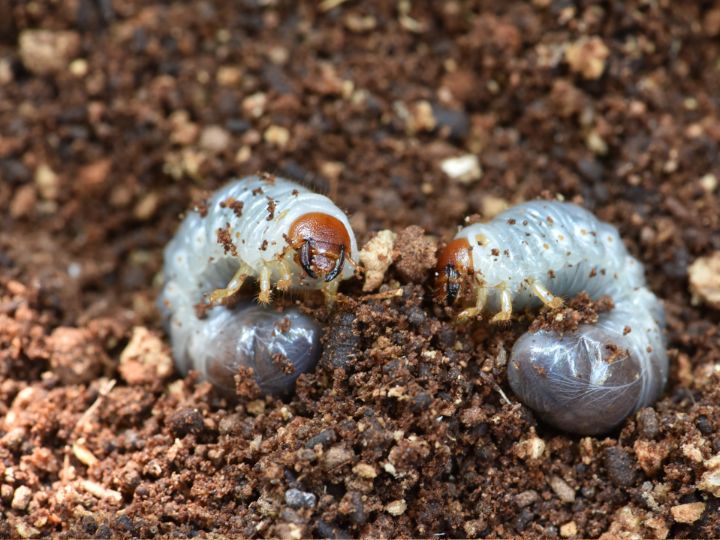Grubs are the larvae of various insects such as beetles, moths, and flies. They are a common sight in lawns and gardens, where they feed on the roots of grass and other plants. While grubs may seem harmless, they can cause significant damage to lawns and gardens if left unchecked. Fortunately, there are several animals that eat grubs and can help control their population.
One such animal is the mole. Moles are notorious for digging tunnels in lawns and gardens, but they do so in search of grubs and other insects. By eating grubs, moles can help prevent damage to lawns and gardens caused by these pests. Other animals that eat grubs include skunks, raccoons, opossums, and birds such as crows and blue jays. While these animals may cause some damage to lawns and gardens while searching for grubs, their benefits in controlling grub populations far outweigh the costs.
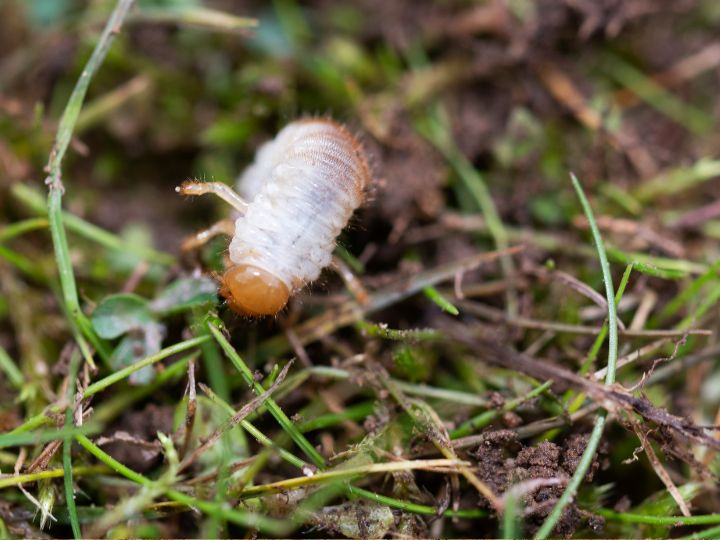
Common Grub Eaters
Grubs, which are the larvae of beetles, are a common pest in lawns and gardens. They feed on grass roots, causing damage to the turf. Fortunately, there are many animals that eat grubs, helping to control their population. In this section, we’ll take a look at some of the most common grub eaters, including birds and mammals.
Birds
Many species of birds feast on grubs, including:
- Robins: These birds have a keen sense of hearing and can detect grubs beneath the soil. They use their beaks to dig them up and eat them.
- Starlings: These birds are omnivorous and will eat almost anything, including grubs. They are particularly fond of Japanese beetle grubs.
- Blue Jays: These birds are known for their love of acorns, but they also eat grubs. They are especially fond of the larvae of the June beetle.
Mammals
Mammals are also known to eat grubs. Some of the most common grub-eating mammals include:
- Skunks: These animals are known for their strong odor, but they also play an important role in controlling the grub population. They dig up grubs with their sharp claws and eat them.
- Raccoons: These animals are omnivorous and will eat almost anything, including grubs. They are particularly fond of the larvae of the Japanese beetle.
- Opossums: These animals are often overlooked, but they are great grub eaters. They use their sharp teeth and claws to dig up grubs and other insects.
Overall, there are many animals that eat grubs, helping to keep their population in check. By encouraging these natural predators, you can reduce the need for chemical pesticides in your lawn and garden.
Beneficial Insects
There are many insects that are beneficial to your lawn and garden. They can help control pests like grubs, and some even help pollinate your plants. Here are two types of beneficial insects that can help control grubs.
Ground Beetles
Ground beetles are a type of insect that can help control grubs. They are predators that feed on a variety of insects, including grubs. They are also attracted to areas with moist soil, so keeping your lawn well-watered can help attract them.
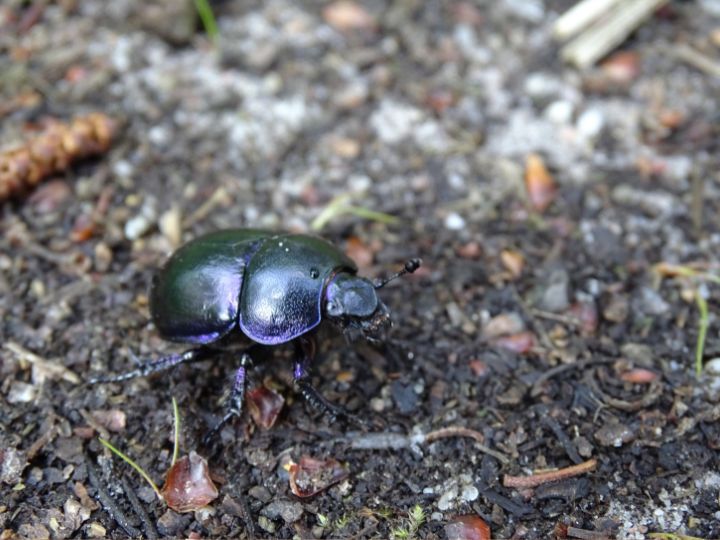
Ground beetles are usually black or brown and can be up to an inch long. They are most active at night, so you may not see them during the day. To attract ground beetles to your lawn, you can create a habitat for them by adding some rocks or logs to your lawn. This will provide them with a place to hide during the day.
Nematodes
Nematodes are tiny, worm-like creatures that can help control grubs. They are natural predators of grubs and other soil-dwelling insects. Nematodes are available for purchase at garden centers and online.
To use nematodes to control grubs, you will need to mix them with water and apply them to your lawn. They are most effective when applied in the spring or fall, when grubs are most active. Nematodes are safe for humans, pets, and other beneficial insects.
In conclusion, there are many beneficial insects that can help control grubs in your lawn and garden. Ground beetles and nematodes are just two examples of insects that can help keep your lawn healthy and pest-free. By creating a habitat for these insects and using nematodes when necessary, you can reduce the number of grubs in your lawn without using harmful chemicals.
Lesser Known Grub Eaters
Amphibians
While most people are aware that birds, raccoons, and skunks eat grubs, there are several lesser-known animals that also feed on these larvae. One such group is amphibians, including frogs and toads. These creatures are often overlooked as grub eaters, but they can be effective at controlling grub populations in their natural habitats.
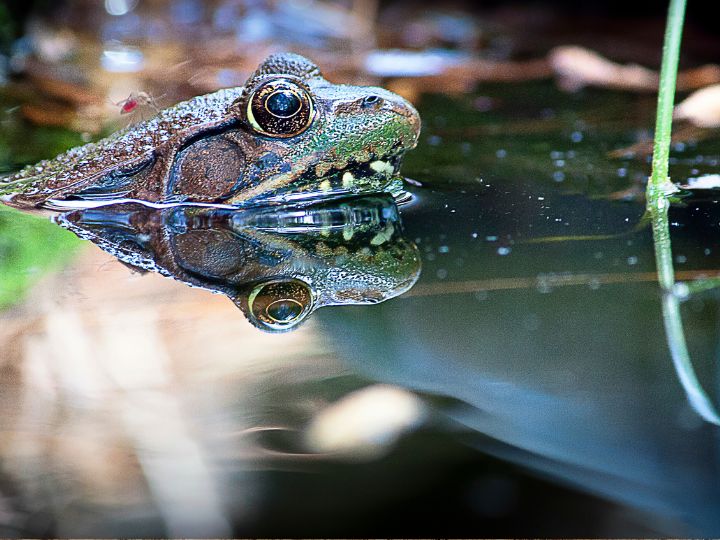
Frogs and toads are particularly fond of grubs during their larval stages when they are still underground. They use their long, sticky tongues to capture the grubs as they move through the soil. Some common species of frogs and toads that eat grubs include the American toad, the green frog, and the bullfrog.
Reptiles
Another group of animals that are often overlooked as grub eaters are reptiles. While not all reptiles eat grubs, some species are known to feed on these larvae. One such species is the common garter snake.
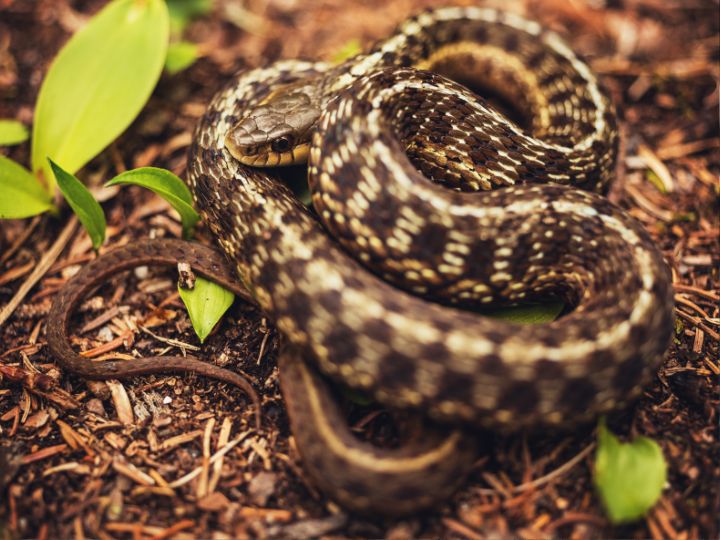
Garter snakes are found throughout North America and are known for their ability to consume a variety of prey, including grubs. These snakes use their keen sense of smell to locate grubs in the soil and then use their sharp teeth to capture and consume them.
In addition to garter snakes, some species of lizards are also known to eat grubs. These include the eastern fence lizard and the five-lined skink. While not as effective at controlling grub populations as some other animals, these reptiles can still play a role in keeping grub numbers in check.
Overall, while not as well-known as some other grub eaters, amphibians and reptiles can be effective at controlling grub populations in their natural habitats. By including these animals in our pest control strategies, we can create a more balanced and sustainable ecosystem for all.
Conclusion
In conclusion, grubs are a common pest that can cause significant damage to lawns and gardens. However, they are also an important part of the ecosystem, providing a food source for a variety of animals.
Based on the research, we found that there are many animals that eat grubs, including badgers, bears, birds, chipmunks, opossums, raccoons, skunks, snakes, turtles, and shrews. Some larger animals, such as raccoons and skunks, may cause damage to lawns while searching for grubs, but they can also help control the grub population.
Birds are another natural predator of grubs and can help aerate the turf as they peck at the pests. In addition, beetle grubs themselves serve an important purpose in the ecosystem by breaking down dead leaves and other plant material, recycling important nutrients into the soil.
While chemical treatments are available to control grubs, they can have negative impacts on the environment and other beneficial insects. Therefore, it is important to consider natural methods of controlling grub populations, such as encouraging natural predators and maintaining a healthy lawn with proper watering and fertilization.
Frequently Asked Questions
Becky is a fervent wildlife enthusiast and pet care expert with a diploma in canine nutrition. Her love for animals stretches beyond the domestic, embracing the wild tapestry of global fauna. With over a decade of experience in animal welfare, Becky lends her expertise to OutlandishOwl through insightful articles, captivating wildlife information, and invaluable guidance on pet nutrition. Her work embodies a deep commitment to understanding the intricate lives of animals and a passion for educating others on sustaining natural habitats. Becky's hands-on conservation efforts and her knack for translating complex dietary science into practical pet feeding tips make her an indispensable voice for creatures great and small.

